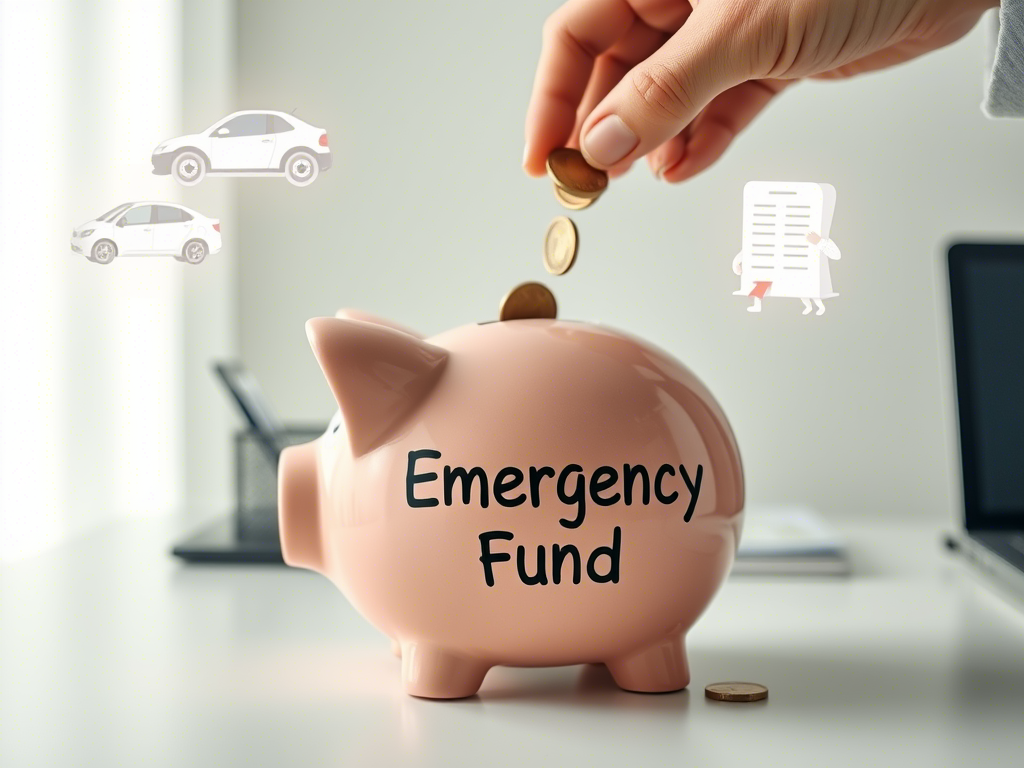How to Budget with Irregular Income as a Freelancer – Freelancing offers incredible freedom—setting your hours, choosing your clients, and working from anywhere. But with that freedom comes a trade-off: financial unpredictability. One month, you might land a big project and feel on top of the world; the next, you’re wondering how you’ll cover your bills. This rollercoaster of irregular income can make budgeting feel overwhelming. The good news? It doesn’t have to be. With the right strategies, you can take control of your finances and build stability, no matter how unpredictable your earnings are.
In this article, we’ll walk you through how to budget with irregular income as a freelancer with five actionable steps. Whether you’re a graphic designer, writer, or consultant, these methods will help you manage your money effectively. By the end, you’ll have a clear roadmap to financial peace of mind—plus a few bonus tips to keep you ahead of the game. Let’s dive in!
Table of Contents
Step 1: Calculate Your Average Income
The first step to budgeting with irregular income as a freelancer is figuring out what you’re working with. Unlike a traditional 9-to-5 job with a steady paycheck, your earnings might swing wildly from month to month. One way to create a sense of stability is to calculate your average monthly income. This gives you a baseline to build your budget around.
How to Do It
Grab your income records from the past 12 months—or as far back as you have data. Add up everything you’ve earned from freelance gigs, then divide by the number of months. Let’s look at an example:
| Month | Income |
|---|---|
| January | $2,500 |
| February | $3,500 |
| March | $2,000 |
| April | $4,000 |
| May | $3,200 |
| June | $2,800 |
| July | $3,000 |
| August | $2,700 |
| September | $3,300 |
| October | $2,900 |
| November | $3,100 |
| December | $3,000 |
Total Income: $36,000
Average Monthly Income: $36,000 ÷ 12 = $3,000
So, $3,000 becomes your starting point. In months when you earn more—like April’s $4,000—you can save the extra $1,000. When you earn less—like March’s $2,000—you can dip into those savings to make up the difference.
What If You’re New to Freelancing?
If you don’t have a year’s worth of data, don’t panic. Use whatever records you have, even if it’s just a few months. Alternatively, estimate based on your current or expected projects. Be conservative with your guess to avoid overestimating. For instance, if you’ve booked $2,000 in projects for your first month, assume that as your baseline until you have more data.
Why It Matters
Knowing your average income smooths out the highs and lows. It’s like laying the foundation for a house—you need a solid base before you can build anything else. Plus, it helps you plan for both feast and famine months.
Take Action: Pull out your bank statements or invoices and calculate your average monthly income today. Write it down—this number is the cornerstone of your budget.
Step 2: Separate Business and Personal Finances
Freelancers often wear multiple hats: you’re the CEO, the worker, and the accountant all rolled into one. But mixing your business and personal finances is a recipe for confusion. To budget effectively with irregular income, keep these two worlds apart.

The Benefits
Having separate accounts clarifies how much you’re earning from freelancing versus what’s available for personal use. It also simplifies tax season—no more digging through statements to figure out which expenses were business-related. And let’s be honest: it feels more professional to have a dedicated business account.
How to Set It Up
- Open a Business Account: Head to your bank or an online service like Novo or Bluevine and open a checking account for your freelance work. Many offer free or low-fee options for small businesses.
- Route Income Here: Direct all client payments to this account. Use it to pay for business expenses like software, supplies, or marketing.
- Pay Yourself: Transfer a set amount to your account each month based on your average income or needs. Treat it like a salary.
For example, if your average income is $3,000, you might transfer $2,500 to your account for living expenses and keep $500 in the business account for taxes or reinvestment.
Pro Tip
Use a business debit card for freelance purchases. It keeps everything tidy and gives you a clear snapshot of your business’s financial health. Wondering how to track those expenses? We’ll cover that in Step 4.
Take Action: Open a business bank account this week. Start small if needed—a basic account will do the trick—and begin funnelling your freelance income through it.
Step 3: Build an Emergency Fund
An emergency fund is a lifeline for anyone, but for freelancers with irregular income, it’s non-negotiable. Think of it as a financial cushion that softens the blow when a client delays payment or a slow month hits.

How Much to Save
Aim for 3-6 months’ worth of living expenses. Calculate your essentials—rent, utilities, groceries, insurance—and multiply by three at minimum. If your monthly essentials total $2,000, shoot for $6,000 to $12,000 in your emergency fund.
Why more than the typical advice for salaried folks? Because your income isn’t guaranteed. A 2021 survey by Upwork found that 59% of freelancers experienced income fluctuations, making a bigger buffer critical.
Building It Step by Step
- Start Small: Set aside 10% of every payment. If you earn $3,000 one month, save $300.
- Automate It: Set up an automatic transfer to a high-yield savings account (like Ally or Marcus) to grow your fund faster.
- Use Windfalls: Landed a big project? Put a chunk of that extra cash into your emergency stash.
Let’s say Sarah, a freelance graphic designer, earns $4,000 in a good month. Her average is $3,000, so she saves $500 toward her emergency fund and uses the rest to cover expenses or taxes. Over time, those small contributions add up.
Why It’s a Game-Changer
An emergency fund buys you peace of mind. You won’t lose sleep over a dry spell or scramble for last-minute gigs. It’s your safety net when the unpredictable happens.
Take Action: Estimate your monthly essentials and set a savings goal. Commit to saving a percentage of your next payment—start today!
Step 4: Track and Manage Your Expenses
You can’t budget what you don’t understand. Tracking your expenses is like shining a light on where your money’s going—both in your business and personal life. For freelancers, this step is extra important because irregular income means you need flexibility to adjust when cash flow tightens.

Tools to Use
- Budgeting Apps: Mint syncs with your accounts and categorizes spending automatically. YNAB (You Need A Budget) helps you plan every dollar, while QuickBooks Self-Employed tracks income, expenses, and taxes in one spot.
- Spreadsheets: Prefer DIY? Create a simple Excel or Google Sheets file. List your expenses in categories like rent, groceries, subscriptions, and business costs.
- Manual Tracking: Jot down every expense in a notebook if tech isn’t your thing—just be consistent.
Categorize and Prioritize
Break your spending into two buckets:
- Essentials: Rent/mortgage, utilities, food, transportation, insurance.
- Non-Essentials: Dining out, entertainment, hobbies, luxury items.
When income dips, prioritize essentials. For example, if you earn $2,000 in a lean month but your average is $3,000, cut back on non-essentials like that extra streaming service or takeout.
Here’s a sample monthly expense breakdown:
| Category | Amount |
|---|---|
| Rent | $1,200 |
| Utilities | $150 |
| Groceries | $350 |
| Internet | $50 |
| Business Tools | $100 |
| Entertainment | $100 |
| Total | $1,950 |
If your income drops below this, you’ll know exactly where to trim.
Review Regularly
Check your spending at least monthly. Are you overspending on business tools? Could you cook more instead of ordering in? Adjust as needed to stay within your average income.
Take Action: Pick a tracking method—app, spreadsheet, or notebook—and log your expenses for the next week. You’ll be surprised how much clarity this brings.
For more on tools, check out our article on Best Budgeting Apps for Freelancers.
Step 5: Stabilize Your Income
Irregular income doesn’t have to mean chaos. While you can’t control every variable, you can take steps to make your cash flow more predictable. Here’s how.

Income Smoothing
This strategy involves saving extra income during high-earning months to cover lean ones. Based on your average income (say, $3,000), set aside anything above that. Earn $4,500 in May? Save $1,500. Earn $2,000 in June? Use $1,000 from savings to hit your $3,000 budget.
Think of it as paying yourself a steady “salary.” It takes discipline but evens out the ups and downs.
Diversify Income Streams
Relying on one client or gig type is risky. Spread your bets:
- Offer New Services: A writer could add editing or a designer could sell templates.
- Passive Income: Create digital products (eBooks, courses) or try affiliate marketing. Even $200 a month adds stability.
- Multiple Clients: Aim for 3-5 regular clients instead of one big fish.
Negotiate Payment Terms
Shift from per-project pay to consistent income. Pitch retainers—monthly fees for ongoing work—to long-term clients.
For example, if you’re a social media manager charging $500 per project, propose a $1,000 monthly retainer for two projects. It’s a win-win: they get priority, you get predictability.
Freelance coach Michelle Rafter says, “Retainers transformed my income from sporadic to steady. It’s about building trust with clients.”
Take Action: Identify one way to stabilize your income—save extra this month, pitch a new service, or propose a retainer. Start now.
Additional Tips for Freelancer Budgeting
These bonus strategies will round out your plan and address common pitfalls.
Plan for Taxes
Unlike employees, freelancers don’t have taxes withheld. Set aside 25-30% of each payment for federal, state, and self-employment taxes (exact amounts vary by location). Use a separate savings account to avoid spending it. Apps like QuickBooks Self-Employed can estimate quarterly payments—check with a tax pro to nail it down.
Use Budgeting Tools
Beyond tracking, tools like Wave (free invoicing and accounting) or FreshBooks (client management and expenses) streamline your finances. They’re built for freelancers, saving you time and headaches.
Review and Adjust
Your budget isn’t set in stone. Income drops? Cut non-essentials. Land a big gig? Boost your emergency fund. Revisit monthly or quarterly to stay aligned.
Tackle Debt Wisely
Got loans or credit card debt? Pay minimums on low-interest debt but attack high-interest balances first. Freeing up cash flow strengthens your budget.
Invest in Growth
Set aside 5-10% of your income for business development—new skills, equipment, or marketing. It’s an investment in steadier income down the road.
For more tax strategies, see Tax Tips for Self-Employed Professionals.
Conclusion of How to Budget with Irregular Income as a Freelancer
Budgeting with irregular income as a freelancer might feel like wrangling a wild horse at first, but it’s entirely doable. By calculating your average income, separating your finances, building an emergency fund, tracking expenses, and stabilizing your income, you’ll turn chaos into control. These steps aren’t just theory—they’re proven strategies that successful freelancers use every day.
Start small if you need to, but start today. Review your budget regularly, tweak it as your career evolves, and don’t hesitate to lean on tools or experts for support. You’ve got the freedom of freelancing—now pair it with the security of a solid financial plan.
What’s your go-to budgeting trick? Drop it in the comments below, or explore more freelance finance tips in our article on Building a Financial Safety Net: A Guide for Freelancers.